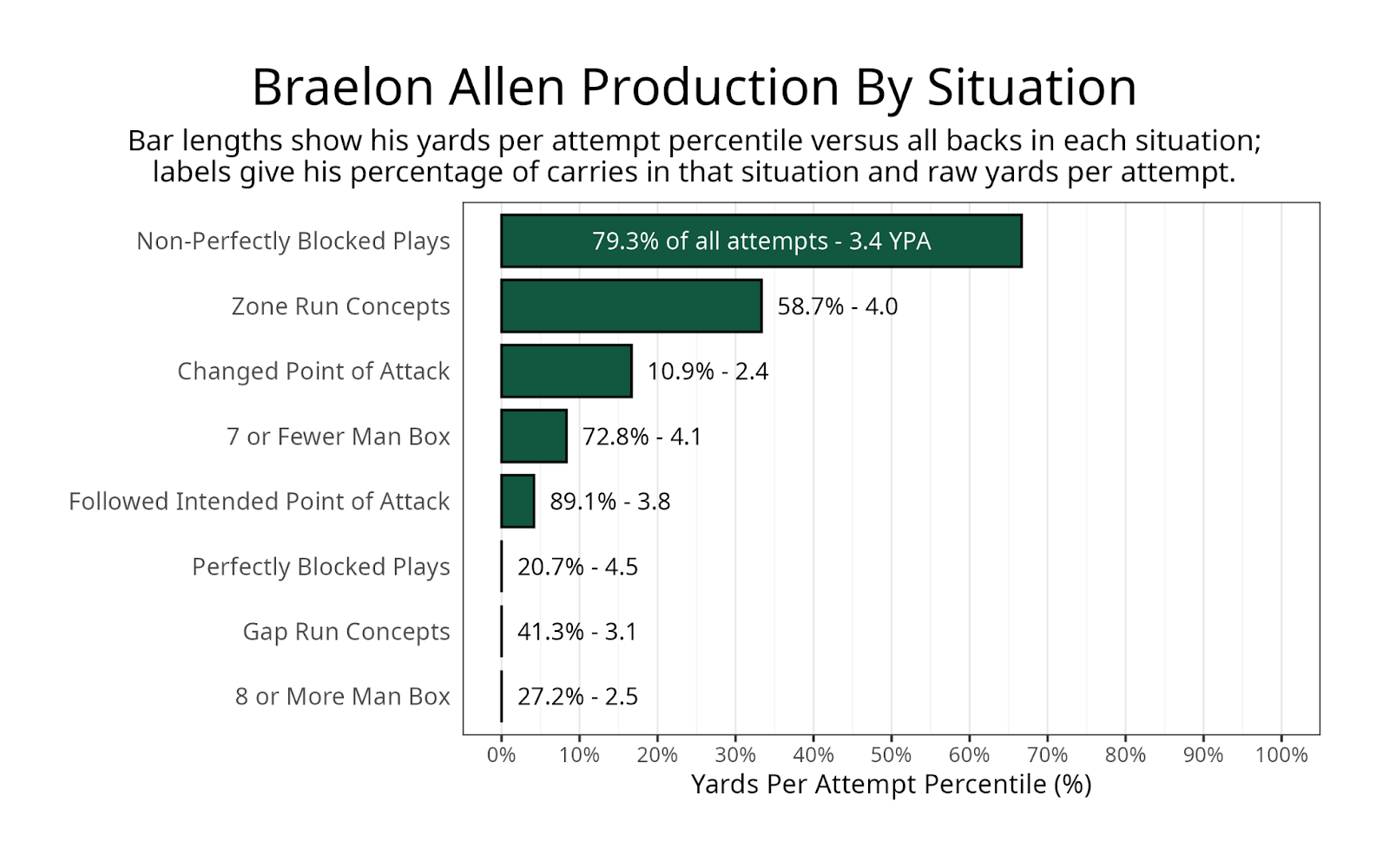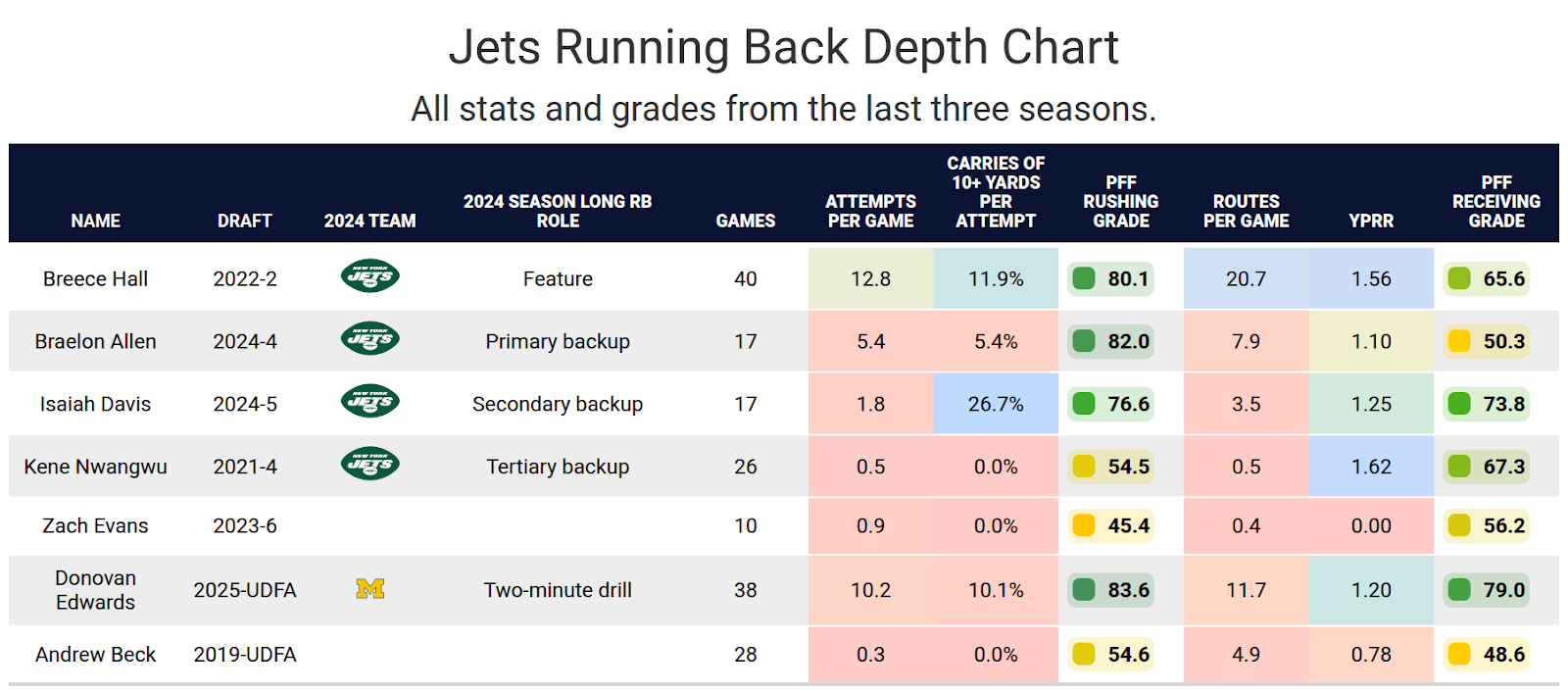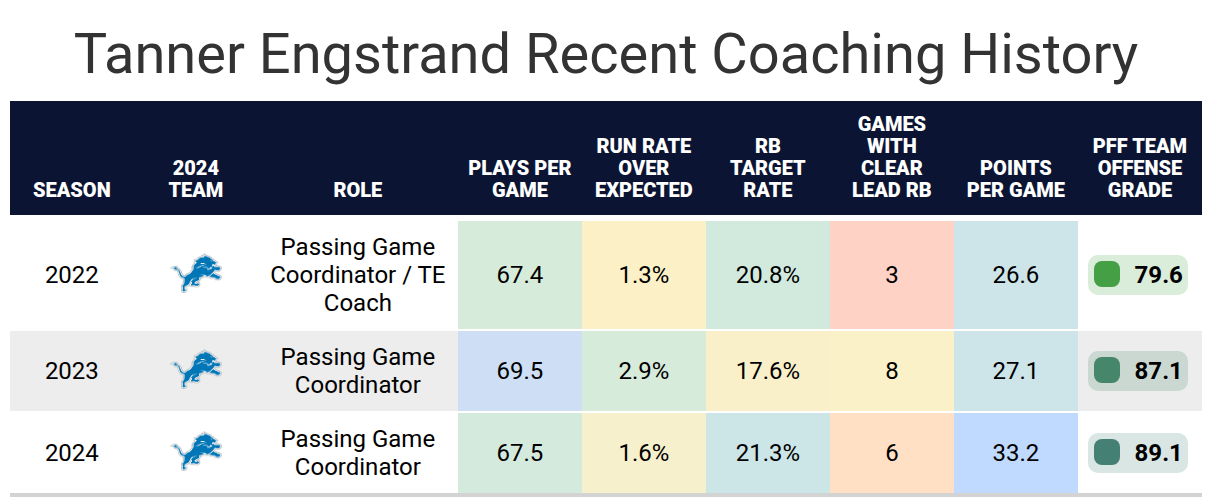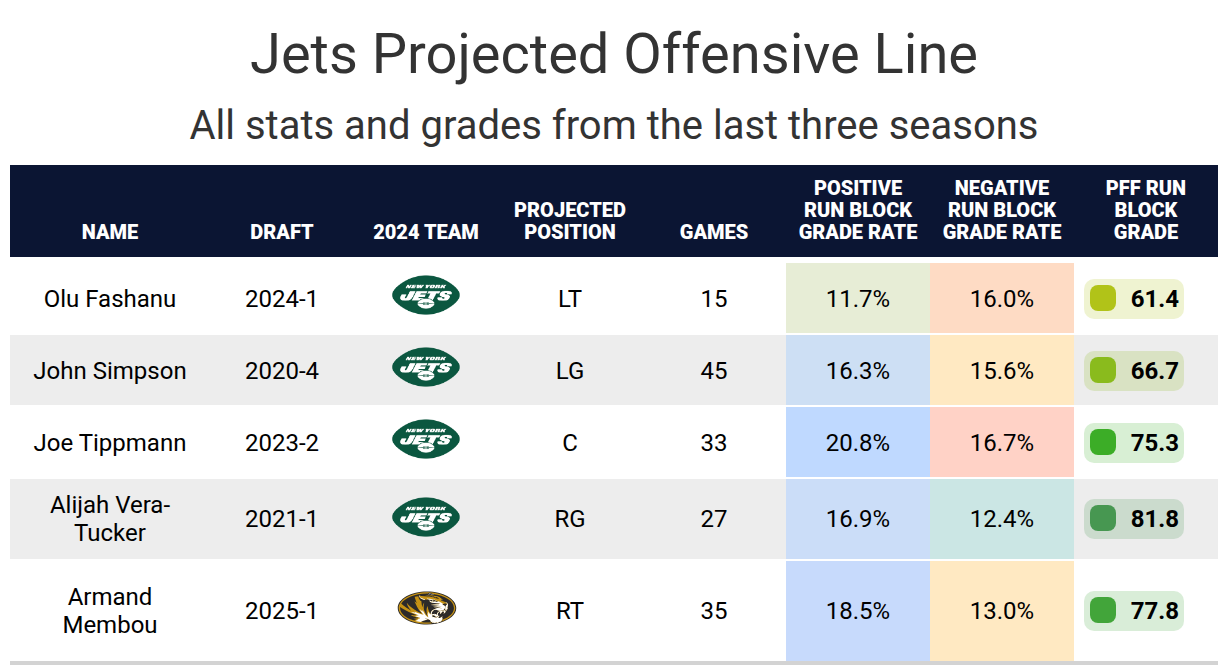- Braelon Allen’s short-yardage strength: The New York Jets running back demonstrated his ability to succeed in critical short-yardage situations last season, which is a role he should maintain this season.
- Mimicking the Detroit Lions: Allen is projected to potentially fill a role similar to those held by Jamaal Williams or David Montgomery in the Detroit Lions‘ offense under the Jets’ new coaching staff, which comes from the Lions.
- Subscribe to PFF+: Get access to player grades, PFF Premium Stats, fantasy football rankings, all of the PFF fantasy draft research tools and more!
Estimated Reading Time: 5 minutes

PFF’s Fantasy Football Player Profile series delivers the most in-depth fantasy football analysis available for the 2025 season.
Using PFF’s exclusive data, we evaluate player performance, competition for touches and how teammates and coaching staffs
Last updated: 7:15 a.m. Wednesday, June 25
Player performance
Braelon Allen joined the New York Jets as a fourth-round pick from the 2024 NFL Draft. The Jets' primary backup to Breece Hall in 2023 was Dalvin Cook, but the Jets didn’t end up re-signing Cook. Hall was dealing with a quadriceps injury early in the year, allowing Allen to run seven times for 33 yards and a touchdown in Week 2 and 11 times for 55 yards in Week 3.
His playing time fluctuated throughout the year, totaling two to seven carries most weeks. Allen started in Week 14 when Hall was out due to a knee injury. He played 54.4% of New York's offensive snaps that game, while his high in other weeks was 36.5%. He ran 11 times for 43 yards and caught four passes for 38 yards, while fifth-round rookie Isaiah Davis was also given an opportunity to shine.
Allen averaged a low 3.6 yards per carry, but he graded well thanks to his excellent play in short-yardage situations. Allen ran the ball 16 times when the Jets needed two yards or less for a first down, and he converted 14 of them. He averaged 3.3 yards per carry on those runs, while the league average was 3.2. His 90.0 rushing grade on those runs was the best among running backs.



Projected role
The Jets didn’t make any changes to their backfield for 2025, as Hall and Davis were his primary sources of competition. The team also added Justin Fields at quarterback, and he will be running the ball a lot more than Aaron Rodgers. This could also include short-yardage situations. The Jets voted to keep the tush push, so there is a chance Fields, in particular, could take those one-yard carries, even though Allen was very successful at them.
Allen is one of the biggest running backs in the league at 6-foot-1 and 235 pounds. Most running backs of that size aren't used significantly in passing situations. Derrick Henry, Najee Harris, Gus Edwards, D’Onta Foreman and James Conner have rarely been used in passing situations. Henry and Conner have been able to turn into consistent fantasy starters despite this, but Allen would need to at least double his rushing attempts per game in order to reach their level.
While most backups that are second on the depth chart are generally considered handcuffs, Davis would likely be the primary beneficiary if Hall misses time. Allen would see a notable increase in snaps, but it would probably only be to 55-60% of New York's offensive snaps rather than being used in a feature role, similar to his one start last season.


Impact of teammates
The Jets hired Aaron Glenn as head coach and Tanner Engstrand as offensive coordinator from the Detroit Lions. In recent years, the Lions have used either Jamaal Williams or David Montgomery on early downs and D’Andre Swift or Jahmyr Gibbs on passing downs. Allen could be well suited for that early-down role, as he's a bigger back than either Williams or Montgomery. The two were used to convert first downs, wear down the defense and, most importantly, score touchdowns.
The running back in this role has finished in the top 20 in fantasy points per game each of the last three seasons. A few things need to go right in order for Allen to reach that top-20 range. Engstrand needs to use the same running back rotation, and Fields can’t be used as the runner in short-yardage situations.
The Jets also need their offensive line to play close to the Lions' level. Detroit has ranked among the top 10 in run-blocking grade each of the last three seasons, while the Jets ranked 12th last season. The Jets moved on from veteran tackles Tyron Smith and Morgan Moses for two first-round picks in Olu Fashanu and Armand Membou. The entire line has a very high positive grade rate, which is generally good for breaking long runs. They have mixed results when it comes to negatively blocked runs. However, Allen stood out in how well he played on non-perfectly blocked runs with 3.4 yards per carry. Montgomery also had 3.4 yards per carry on non-perfectly blocked runs, but Montgomery was better on the positively blocked runs. If Allen can avoid more tackles once the line gives him those clean blocks, that could make a big difference to his fantasy production.


Bottom line
The goal is for Allen to be the next David Montgomery. The coaching staff needs to use him in that role, the offense needs to play well enough for Allen to score enough points, and Justin Fields can’t be used on the tush push. While that is a lot, there is similarly a lot for any other late-round running back, and this one doesn’t require an injury to a starter.

Footnotes
- Statistics in tables and charts were chosen based on their ability to predict future fantasy performance on a per-game or per-opportunity basis or to describe the player relative to others at the same position.
- “Opportunities” are defined as passing dropbacks, rushing attempts and routes run as a receiver.
- Numbers are provided either by season or based on the past three years. For rookies, only college statistics are included. For non-rookies, only NFL statistics are considered, regardless of whether they played in college within the previous three years.
- As college competition is easier than NFL competition, most rookies are likely to see a decline from their historical numbers.
- Only FBS data is considered for college players and comparisons.
- Kneel-downs are removed from rushing data to provide cleaner quarterback rushing rate statistics.
- The table colors in this article range from blue (indicating good/high) to red (indicating bad/low).
- All percentiles and color codings compare the given player to others with a high sample of opportunities. Generally, the cutoff is one-third of the possible opportunities in the sample. If a player does not meet the threshold, they are still included in the comparison, though their results may appear better or worse than expected due to the smaller, less predictive sample size.
- Information on utilization classifications and their importance can be found here for running backs, wide receivers and tight ends.



 © 2025 PFF - all rights reserved.
© 2025 PFF - all rights reserved.